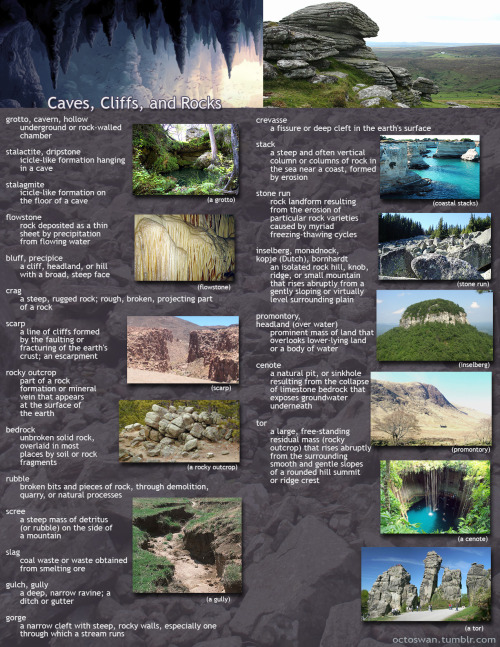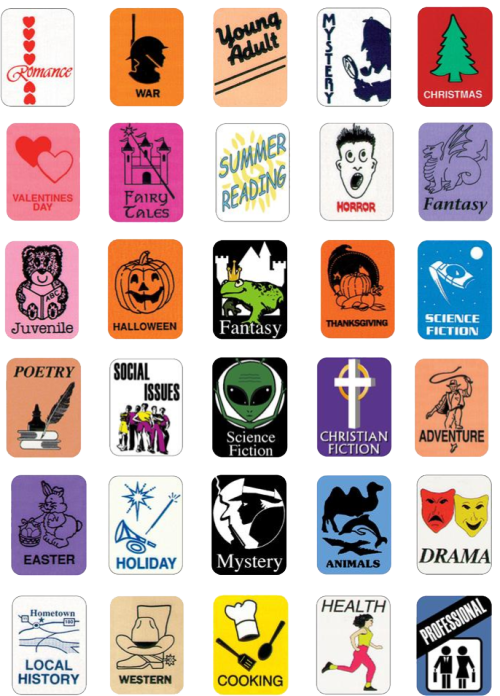[image Description: A Tweet By User @indigenousAI Saying

[image description: a tweet by user @indigenousAI saying
“fun fact: as a DV survivor i cannot register to vote because doing so makes my address public. anyone who is fleeing or hiding from an abuser is automatically disenfranchised from the political process and this is a feature, not a bug”]
More Posts from Thekingsbutler and Others
The problem with adults is that they don't have sleepovers where they transition between fun movie and snack time to psychoanalyzing themselves in the safety of the others


Just finished Wolfsbane on Webtoon (Ryan Cady and Morgan Beem) and came to Tumblr to find the fans.
Where are yall at???
Send help and emotional support. Also go read Wolfsbane on Webtoon.
If you like frogs. Or possums. Or cool builds. Or happiness. This is the video for you.





I made these as a way to compile all the geographical vocabulary that I thought was useful and interesting for writers. Some descriptors share categories, and some are simplified, but for the most part everything is in its proper place. Not all the words are as useable as others, and some might take tricky wording to pull off, but I hope these prove useful to all you writers out there!
(save the images to zoom in on the pics)
Please stop trigger tagging with #epilepsy tw/cw/warning/etc.
I need every single person to understand how horrible tumblr’s tagging system is
I go into the tag for epilepsy and its all flashing lights. We can’t use our own tag because people without epilepsy fill it up with improper warnings.
Use ‘flashing’ in place of ‘epilepsy’ in your tags. You aren’t warning people of epileptics, you’re warning us of flashing lights. Please please tag properly. Epileptics say this endlessly and constantly and it’s ignored. You are risking lives by doing this.
Here’s proof of what I mean:




THIS POST IS 100% OKAY TO REBLOG, I ENCOURAGE PEOPLE WITHOUT EPILEPSY TO ESPECIALLY DO SO!
Seeing the Invisible Universe

This computer-simulated image shows a supermassive black hole at the core of a galaxy. The black region in the center represents the black hole’s event horizon, beyond which no light can escape the massive object’s gravitational grip. The black hole’s powerful gravity distorts space around it like a funhouse mirror. Light from background stars is stretched and smeared as it skims by the black hole. You might wonder — if this Tumblr post is about invisible things, what’s with all the pictures? Even though we can’t see these things with our eyes or even our telescopes, we can still learn about them by studying how they affect their surroundings. Then, we can use what we know to make visualizations that represent our understanding.
When you think of the invisible, you might first picture something fantastical like a magic Ring or Wonder Woman’s airplane, but invisible things surround us every day. Read on to learn about seven of our favorite invisible things in the universe!
1. Black Holes

This animation illustrates what happens when an unlucky star strays too close to a monster black hole. Gravitational forces create intense tides that break the star apart into a stream of gas. The trailing part of the stream escapes the system, while the leading part swings back around, surrounding the black hole with a disk of debris. A powerful jet can also form. This cataclysmic phenomenon is called a tidal disruption event.
You know ‘em, and we love ‘em. Black holes are balls of matter packed so tight that their gravity allows nothing — not even light — to escape. Most black holes form when heavy stars collapse under their own weight, crushing their mass to a theoretical singular point of infinite density.
Although they don’t reflect or emit light, we know black holes exist because they influence the environment around them — like tugging on star orbits. Black holes distort space-time, warping the path light travels through, so scientists can also identify black holes by noticing tiny changes in star brightness or position.
2. Dark Matter

A simulation of dark matter forming large-scale structure due to gravity.
What do you call something that doesn’t interact with light, has a gravitational pull, and outnumbers all the visible stuff in the universe by five times? Scientists went with “dark matter,” and they think it's the backbone of our universe’s large-scale structure. We don’t know what dark matter is — we just know it's nothing we already understand.
We know about dark matter because of its gravitational effects on galaxies and galaxy clusters — observations of how they move tell us there must be something there that we can’t see. Like black holes, we can also see light bend as dark matter’s mass warps space-time.
3. Dark Energy

Animation showing a graph of the universe’s expansion over time. While cosmic expansion slowed following the end of inflation, it began picking up the pace around 5 billion years ago. Scientists still aren’t sure why.
No one knows what dark energy is either — just that it’s pushing our universe to expand faster and faster. Some potential theories include an ever-present energy, a defect in the universe’s fabric, or a flaw in our understanding of gravity.
Scientists previously thought that all the universe’s mass would gravitationally attract, slowing its expansion over time. But when they noticed distant galaxies moving away from us faster than expected, researchers knew something was beating gravity on cosmic scales. After further investigation, scientists found traces of dark energy’s influence everywhere — from large-scale structure to the background radiation that permeates the universe.
4. Gravitational Waves

Two black holes orbit each other and generate space-time ripples called gravitational waves in this animation.
Like the ripples in a pond, the most extreme events in the universe — such as black hole mergers — send waves through the fabric of space-time. All moving masses can create gravitational waves, but they are usually so small and weak that we can only detect those caused by massive collisions. Even then they only cause infinitesimal changes in space-time by the time they reach us. Scientists use lasers, like the ground-based LIGO (Laser Interferometer Gravitational-Wave Observatory) to detect this precise change. They also watch pulsar timing, like cosmic clocks, to catch tiny timing differences caused by gravitational waves.
This animation shows gamma rays (magenta), the most energetic form of light, and elusive particles called neutrinos (gray) formed in the jet of an active galaxy far, far away. The emission traveled for about 4 billion years before reaching Earth. On Sept. 22, 2017, the IceCube Neutrino Observatory at the South Pole detected the arrival of a single high-energy neutrino. NASA’s Fermi Gamma-ray Space Telescope showed that the source was a black-hole-powered galaxy named TXS 0506+056, which at the time of the detection was producing the strongest gamma-ray activity Fermi had seen from it in a decade of observations.
5. Neutrinos

This animation shows gamma rays (magenta), the most energetic form of light, and elusive particles called neutrinos (gray) formed in the jet of an active galaxy far, far away. The emission traveled for about 4 billion years before reaching Earth. On Sept. 22, 2017, the IceCube Neutrino Observatory at the South Pole detected the arrival of a single high-energy neutrino. NASA’s Fermi Gamma-ray Space Telescope showed that the source was a black-hole-powered galaxy named TXS 0506+056, which at the time of the detection was producing the strongest gamma-ray activity Fermi had seen from it in a decade of observations.
Because only gravity and the weak force affect neutrinos, they don’t easily interact with other matter — hundreds of trillions of these tiny, uncharged particles pass through you every second! Neutrinos come from unstable atom decay all around us, from nuclear reactions in the Sun to exploding stars, black holes, and even bananas.
Scientists theoretically predicted neutrinos, but we know they actually exist because, like black holes, they sometimes influence their surroundings. The National Science Foundation’s IceCube Neutrino Observatory detects when neutrinos interact with other subatomic particles in ice via the weak force.
6. Cosmic Rays

This animation illustrates cosmic ray particles striking Earth's atmosphere and creating showers of particles.
Every day, trillions of cosmic rays pelt Earth’s atmosphere, careening in at nearly light-speed — mostly from outside our solar system. Magnetic fields knock these tiny charged particles around space until we can hardly tell where they came from, but we think high energy events like supernovae can accelerate them. Earth’s atmosphere and magnetic field protect us from cosmic rays, meaning few actually make it to the ground.
Though we don’t see the cosmic rays that make it to the ground, they tamper with equipment, showing up as radiation or as “bright” dots that come and go between pictures on some digital cameras. Cosmic rays can harm astronauts in space, so there are plenty of precautions to protect and monitor them.
7. (Most) Electromagnetic Radiation

The electromagnetic spectrum is the name we use when we talk about different types of light as a group. The parts of the electromagnetic spectrum, arranged from highest to lowest energy are: gamma rays, X-rays, ultraviolet light, visible light, infrared light, microwaves, and radio waves. All the parts of the electromagnetic spectrum are the same thing — radiation. Radiation is made up of a stream of photons — particles without mass that move in a wave pattern all at the same speed, the speed of light. Each photon contains a certain amount of energy.
The light that we see is a small slice of the electromagnetic spectrum, which spans many wavelengths. We frequently use different wavelengths of light — from radios to airport security scanners and telescopes.
Visible light makes it possible for many of us to perceive the universe every day, but this range of light is just 0.0035 percent of the entire spectrum. With this in mind, it seems that we live in a universe that’s more invisible than not! NASA missions like NASA's Fermi, James Webb, and Nancy Grace Roman space telescopes will continue to uncloak the cosmos and answer some of science’s most mysterious questions.
Make sure to follow us on Tumblr for your regular dose of space!
does anybody remember fun. Nobody even remembers fun. anymore, give me a second I— I need to get my story straight my friends are in the bathroom getting higher than the empire state my lover she's waiting for me just across the bar my seats been taken by some sun glasses asking bout a scar but I know I gave it to you months ago I know you're trying to forget but between the drinks and subtle things the holes in my apologies you know I'm trying hard to take it back so if by the time the bar closes and you feel like falling down I'll carry you home
So hey, to anyone who does femme historical fashion anywhere between 1885 and 1950-
Cornell University has the entire archives of Good Housekeeping up from that time period. And Good Housekeeping used to have English-language fashion plates with clear instructions as to fabric, colour, and cut.
They were ads for the personal shopping service Good Housekeeping apparently??? ran around this time???? and they are a fucking goldmine if you're remotely interested in fashion history or if you're looking to build a 20th century historical wardrobe.
Just, like, look at this?????

An itemized layout of every piece of a young bride's (aspirational) wardrobe in 1930. Including prices. And then below it, a fashion plate, with English-language descriptions of what all these things are and what fabrics they're made of. And an ad for Good Housekeeping's fucking personal shopping service again. XD
IDK, most people who do historical fashion on any kind of serious level probably already know about this??? but I didn't and was stunned and overjoyed to find out that this existed. my research at the library gave me a bunch of high-level overviews that weren't helpful for more than colour and cut.
SO YEAH. THANK YOU CORNELL UNIVERSITY.
I've not seen these in many a moon. Beautiful.

library classification labels
Love how tumblr has its own folk stories. Yeah the God of Arepo we’ve all heard the story and we all still cry about it. Yeah that one about the woman locked up for centuries finally getting free. That one about the witch who would marry anyone who could get her house key from her cat and it’s revealed she IS the cat after the narrator befriends the cat.
-
 coffee-addict-confessional reblogged this · 1 week ago
coffee-addict-confessional reblogged this · 1 week ago -
 dazzlingstarlight23 reblogged this · 1 week ago
dazzlingstarlight23 reblogged this · 1 week ago -
 dazzlingstarlight23 liked this · 1 week ago
dazzlingstarlight23 liked this · 1 week ago -
 imjusthopelessenough reblogged this · 1 week ago
imjusthopelessenough reblogged this · 1 week ago -
 imjusthopelessenough liked this · 1 week ago
imjusthopelessenough liked this · 1 week ago -
 mr-house-s-courier liked this · 1 week ago
mr-house-s-courier liked this · 1 week ago -
 wrennvy reblogged this · 1 week ago
wrennvy reblogged this · 1 week ago -
 wrennvy liked this · 1 week ago
wrennvy liked this · 1 week ago -
 sosoulpoetry reblogged this · 1 week ago
sosoulpoetry reblogged this · 1 week ago -
 sosoulpoetry reblogged this · 1 week ago
sosoulpoetry reblogged this · 1 week ago -
 takinoverthetardis liked this · 1 week ago
takinoverthetardis liked this · 1 week ago -
 raineofthedragons reblogged this · 1 week ago
raineofthedragons reblogged this · 1 week ago -
 raineofthedragons liked this · 1 week ago
raineofthedragons liked this · 1 week ago -
 ashacoelomate liked this · 1 week ago
ashacoelomate liked this · 1 week ago -
 meowdyjac liked this · 2 weeks ago
meowdyjac liked this · 2 weeks ago -
 kiyalle liked this · 2 weeks ago
kiyalle liked this · 2 weeks ago -
 mack-timelines liked this · 2 weeks ago
mack-timelines liked this · 2 weeks ago -
 sable-bracelet liked this · 2 weeks ago
sable-bracelet liked this · 2 weeks ago -
 silverlizard012 reblogged this · 2 weeks ago
silverlizard012 reblogged this · 2 weeks ago -
 zipp7201 liked this · 2 weeks ago
zipp7201 liked this · 2 weeks ago -
 secretagentg reblogged this · 2 weeks ago
secretagentg reblogged this · 2 weeks ago -
 itsdumbasshour liked this · 2 weeks ago
itsdumbasshour liked this · 2 weeks ago -
 honeywluv liked this · 2 weeks ago
honeywluv liked this · 2 weeks ago -
 honeywluv reblogged this · 2 weeks ago
honeywluv reblogged this · 2 weeks ago -
 ptolomeia reblogged this · 2 weeks ago
ptolomeia reblogged this · 2 weeks ago -
 its-chickenwing-450 liked this · 2 weeks ago
its-chickenwing-450 liked this · 2 weeks ago -
 the-daydreamer-in-the-corner reblogged this · 2 weeks ago
the-daydreamer-in-the-corner reblogged this · 2 weeks ago -
 gay-for-applebees reblogged this · 2 weeks ago
gay-for-applebees reblogged this · 2 weeks ago -
 allonsyassholes reblogged this · 2 weeks ago
allonsyassholes reblogged this · 2 weeks ago -
 allonsyassholes liked this · 2 weeks ago
allonsyassholes liked this · 2 weeks ago -
 yourimjustusingthisforstuffposts reblogged this · 2 weeks ago
yourimjustusingthisforstuffposts reblogged this · 2 weeks ago -
 asadmeanman reblogged this · 2 weeks ago
asadmeanman reblogged this · 2 weeks ago -
 homebodyheart reblogged this · 2 weeks ago
homebodyheart reblogged this · 2 weeks ago -
 homebodyheart liked this · 2 weeks ago
homebodyheart liked this · 2 weeks ago -
 barelybuckley reblogged this · 2 weeks ago
barelybuckley reblogged this · 2 weeks ago -
 sugarplumsandmoonpies liked this · 2 weeks ago
sugarplumsandmoonpies liked this · 2 weeks ago -
 lookforanewangle reblogged this · 2 weeks ago
lookforanewangle reblogged this · 2 weeks ago -
 brayinghorses liked this · 2 weeks ago
brayinghorses liked this · 2 weeks ago -
 lurkerviolin reblogged this · 2 weeks ago
lurkerviolin reblogged this · 2 weeks ago -
 krillmonger reblogged this · 2 weeks ago
krillmonger reblogged this · 2 weeks ago -
 actually-a-bread-loaf reblogged this · 2 weeks ago
actually-a-bread-loaf reblogged this · 2 weeks ago -
 haliendal reblogged this · 2 weeks ago
haliendal reblogged this · 2 weeks ago -
 sunriseseance reblogged this · 2 weeks ago
sunriseseance reblogged this · 2 weeks ago -
 houseofcharobones liked this · 2 weeks ago
houseofcharobones liked this · 2 weeks ago -
 rambles-and-shenanigans reblogged this · 2 weeks ago
rambles-and-shenanigans reblogged this · 2 weeks ago -
 fullyfazed liked this · 2 weeks ago
fullyfazed liked this · 2 weeks ago -
 mrsghostface liked this · 2 weeks ago
mrsghostface liked this · 2 weeks ago -
 shoestrum liked this · 2 weeks ago
shoestrum liked this · 2 weeks ago -
 squishyyuri liked this · 2 weeks ago
squishyyuri liked this · 2 weeks ago -
 fukurouonthesea reblogged this · 2 weeks ago
fukurouonthesea reblogged this · 2 weeks ago

Perpetually confused. Writing, collaging, others. All Pronouns. 20s.Started this for Ao3 stuff but let's see how it goes.https://archiveofourown.org/users/ButlerOfKings
140 posts